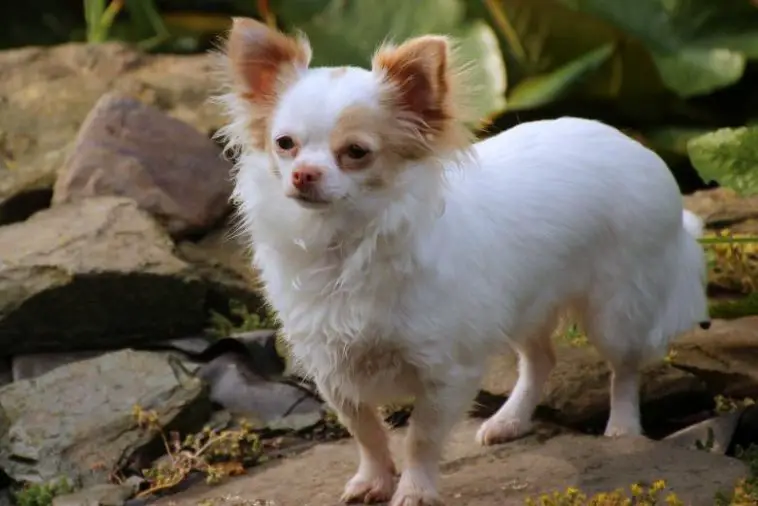‘When to spay a Chihuahua?’ A friend who recently adopted a female Chihuahua called to ask me one day. She knew we had had our Chi spayed before she turned a year old.
I told her to speak to her vet because every dog is different. However, for most dogs, the right time for spaying/neutering is between the ages of 4 and 6 months.
Any older and your Chi could develop health issues and even complications from anesthesia which is necessary for the spaying surgery.
In any case, please speak to your vet and get your Chi spayed as soon as the time is right.
When to Spay a Chihuahua?
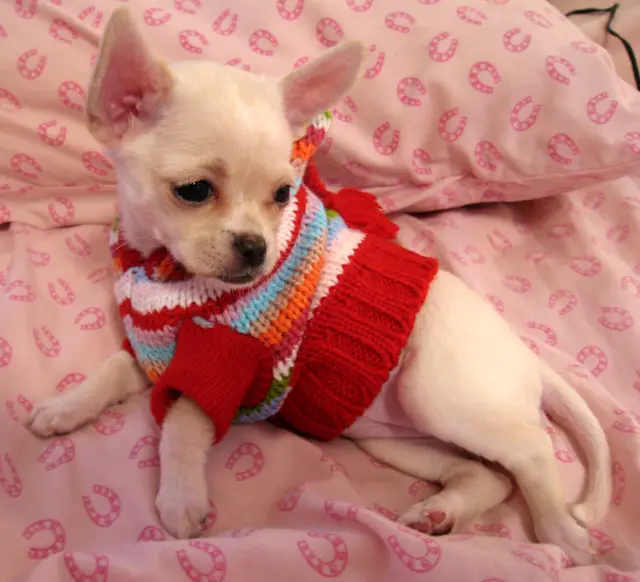
The right time to spay a Chihuahua is between 4 and 6 months of age. Your Chi hasn’t yet developed sexual maturity at this age and probably hasn’t had her first heat.
At this young age, your Chi has also not developed any impressions and will be young enough to easily overcome the trauma of surgery and hospitalization.
Often, dogs that are spayed at a later age tend to develop fear or phobia of vets and hospitalizations, which is why, the 4 to 6 month-mark is a good age to get her fixed.
Moreover, between the age of 4 and 6 months, most Chis would not have their heat cycle. This small dog breed typically comes in heat between 8 and 12 months of age – although this can vary from dog to dog.
That is why it is best to consult your vet about the right time for spaying.
Some Chihuahua owners wait for their bitch to have one litter before spaying. This isn’t necessary. In fact, spaying before having a litter can have many benefits such as preventing pyometra and uterine tumors.
A young Chihuahua puppy will also be of the right temperament compared to an older Chihuahua that has had one or more heat cycles.
That is why early spaying is the best for all dog breeds and not just a Chi.
At What Age Should you Neuter your Chihuahua?
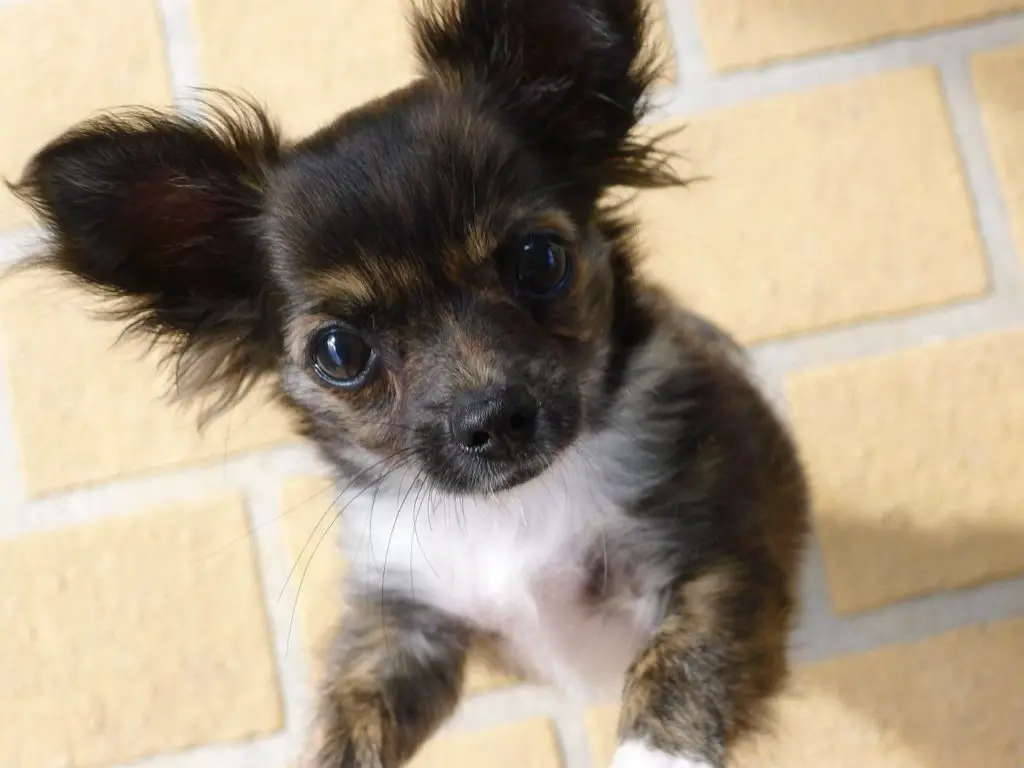
Like spaying, it is best to neuter your male Chihuahua between the ages of 4 and 9 months. This way, your male Chihuahua would not have developed its sexual hormones and probably not have started marking territory or showing other forms of sexual aggression.
At this young age, the surgery will also be less complicated in a Chihuahua puppy than it would be at a later stage with an older Chihuahua.
The advantage with male dogs is that they do not come in heat unlike females so it is okay to wait slightly longer than you’d wait for your female Chihuahua’s surgery.
The benefit of early spaying and neutering is that it can prevent many unwanted behaviors like overprotectiveness, territory marking, and humping.
Early neutering in male Chihuahuas can also prevent prostate disease, hernias, and certain cancers.
What are the Benefits of Spaying/Neutering a Chihuahua at an Early Age?
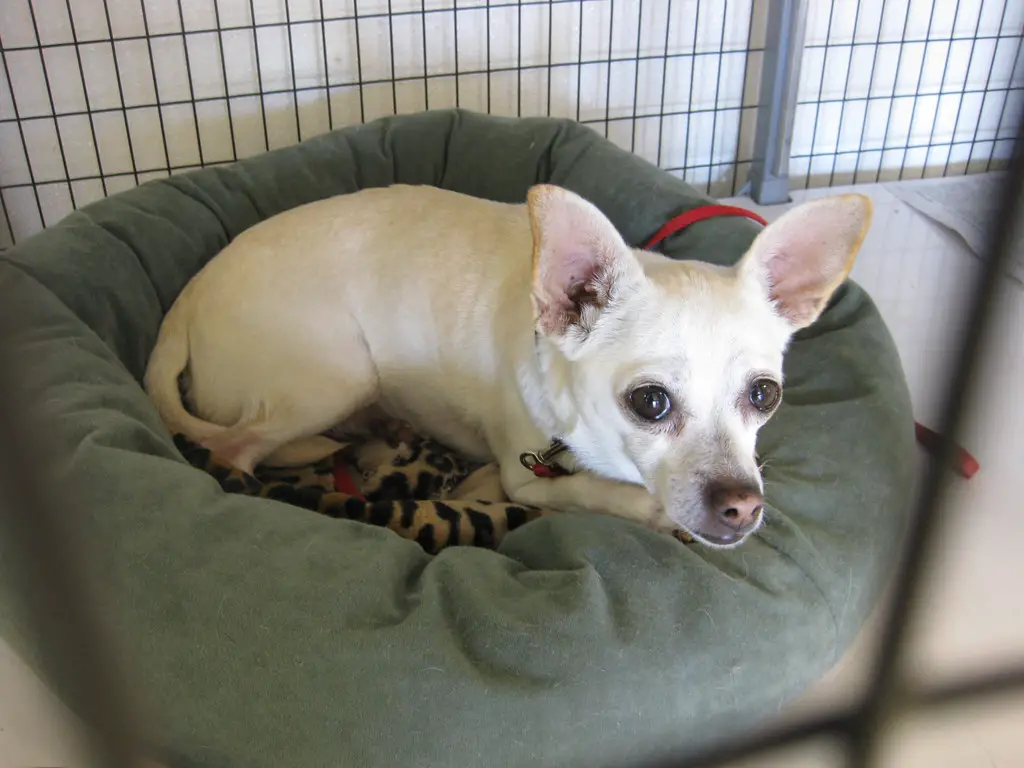
According to ASPCA following are the benefits of the spaying/neutering surgery:
1. It might increase your pet’s longevity
In male and female dogs, spaying/neutering can reduce certain cancers as well as a deadly infection pyometra which affects un-spayed female dogs.
Spaying can reduce your female Chihuahua’s risk of mammary and ovarian cancers and in male Chihuahuas, neutering reduces the risk of prostate cancer. There is also evidence that shows these benefits of spaying before the bitch’s first heat cycle.
2. Prevents unwanted behaviors
Female Chihuahuas tend to mark their territory, become clingy, and even aggressive during heat. Similarly, male Chis tend to get aggressive, bark excessively, hump everything in sight, or may even wander off to search for a mate. By fixing your Chi, you can easily prevent these unwanted behaviors.
3. Less cleanup for you
When a female Chihuahua goes in heat, she will have a lot of discharge from her vulva. This could stain your floors, carpets, bedding, etc. Similarly, dogs might urinate indoors and the urine will have a strong odor as well. By fixing your pet, you can prevent these issues and reduce the hassles of cleanup.
4. Prevent unwanted litter
Pet overpopulation causes too many dogs to end up in pounds and animal shelters because no one wants them. By fixing your pet, you can prevent unwanted pregnancies as well as the hassles of finding good homes for the pups. Spaying/neutering is also more cost-effective than caring for large Chihuahua litters.
Find out: How Many Puppies do Chihuahuas Have
What are the Risks of Spaying/Neutering an Older Chihuahua?

The spaying or neutering surgery is done under anesthesia.
For older dogs, this surgery could be more complicated as it could take longer to heal than it would in young Chi pups.
There is also a chance of complications arising from administering anesthesia.
However, it is still better to get your dog fixed than not at all. Your vet can perform some tests to ensure that your old Chihuahua is fit for surgery.
Spaying/neutering is important no matter what your dog’s age is. It can prolong your Chi’s life and can prevent many heartaches and hassles that arise by leaving it an intact dog.
Is My Chihuahua too Small for Spaying or Neutering? How Much Should a Chihuahua Weigh to be Fit for Spaying/Neutering?
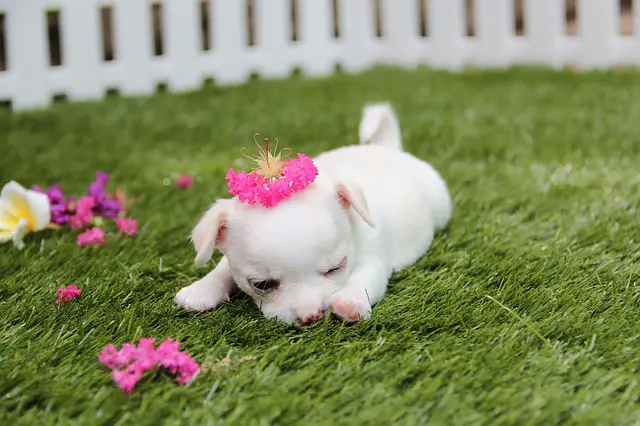
An underweight Chihuahua is not eligible for spaying or neutering surgery. Spaying surgery is especially more complicated than neutering surgery, so it could be dangerous for an underweight female Chi.
Similarly, it could be risky spaying/neutering an overweight Chihuahua.
Check out this guide on how much a Chihuahua should ideally weigh. On average, this small dog breed should not weigh more than 6 to 9 lb. at adulthood. (This will vary on your Chi’s parentage and bloodlines so always consult your vet and breeder to estimate how much your pet needs to weigh).
Your vet can also guide you about feeding/exercising your Chi to get it to the right weight for the age at which you plan to spay/neuter your Chi.
Also, check out how many calories your pet should consume on a daily basis so that it can achieve the optimum weight for its age.
How Much Does a Chihuahua Spaying/Neutering Surgery Cost?
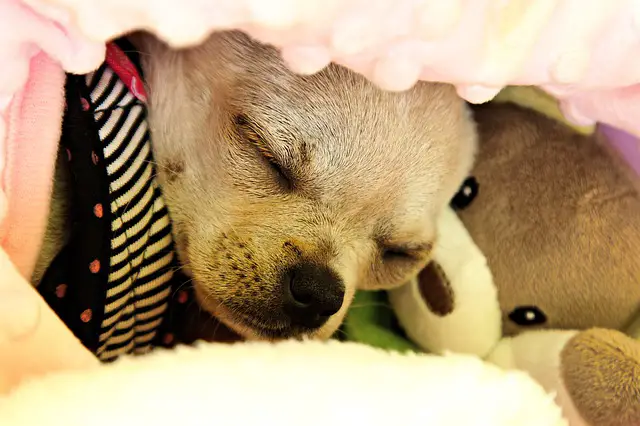
Neutering a Chihuahua is slightly cheaper than spaying a female Chihuahua. This is due to the complications of the spaying procedure.
Even neutering is not inexpensive and can cost anywhere between $50 and $350 based on where you live.
Some animal shelters have tie-ups with veterinary facilities and you might be able to get your dog fixed at a lower rate in case you have adopted or rescued it from the shelter.
The cost of Chihuahua spaying surgery can run in the order of $100 and $400 based on your city, vet, etc.
Remember: spaying/neutering procedure at the right time will be a lot cheaper than having the pet operated in emergency should pyometra or other health issues occur due to leaving it intact.
Will My Chihuahua’s Behavior Change after Spaying?
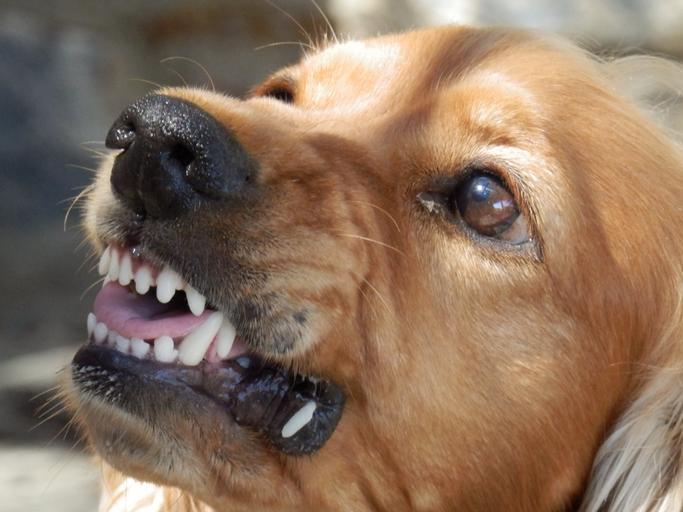
There will be some changes in your Chihuahua’s personality but these will vary significantly from dog to dog.
Note that these personality or behavior changes may not even happen. This is especially the case when you get your Chihuahua spayed (or neutered) at an early age.
You will also see positive changes like reduced marking behaviors and indoor urinating. Your dog will also stop humping or mounting inanimate objects, other dogs, or people.
Another positive change is that your male Chihuahua will be less likely to wander or roam about. This will enhance his safety and also mean fewer hassles for you. Also, neutered male Chihuahuas tend to show reduced aggression if you get them fixed at an early age.
Likewise, you will have fewer stray dogs climbing over your fence – a common occurrence when your female Chi is heat. You will also not have to deal with the stains that come when your Chi is in heat.
Some female dogs tend to get a bit lethargic after surgery but that will pass. You may want to pay attention to her diet and exercise since many female Chis tend to put on weight rapidly post-spaying.
This is avoidable if you get your Chihuahua fixed before its first heat cycle and also by exercising your pet daily once your vet allows it.
Chihuahua Neutering-Spaying After-Care – 4 Important Points Every Dog Owner Should Know
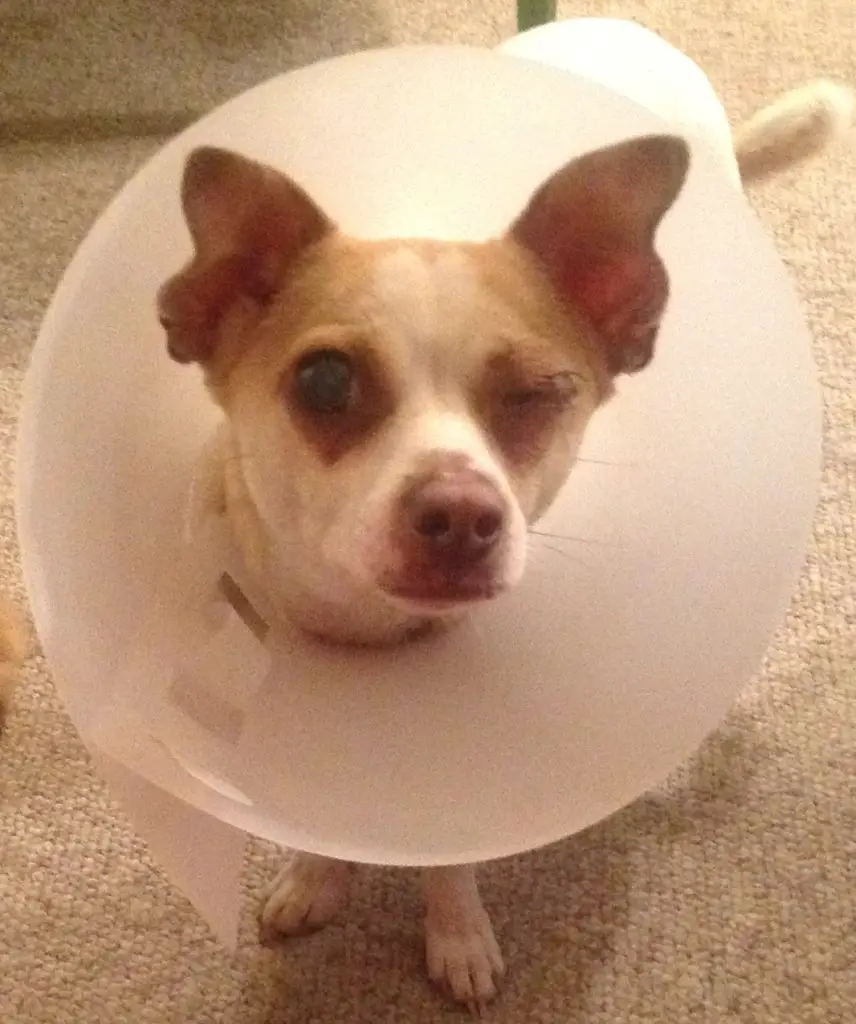
Below are some general instructions your vet will give you post spaying/neutering surgery:
1. Avoid strenuous exercise
Do not exercise your Chi strenuously for at least 2 to 3 weeks post-surgery. In particular, do not let it swim, jump, or run. These activities could cause the stitches to come out which could lead to bleeding. You can also limit its activity by crating it or placing it in a small room/bathroom.
2. Avoid too much excitement
Chihuahuas are excitable dogs but it is very important to keep them calm during the recovery phase. Avoid taking it to the Dog Park and try to minimize stress, noises, and excitement in its environment. If your pet is having trouble settling down, speak to your vet for some calming supplements or pain-relief medicines.
3. Use a collar
Your vet will give you an Elizabeth collar to place around your Chi’s neck. This can prevent it from licking the surgical site which can be very harmful. Please use the collar for as long as your vet recommends to prevent infection at the site.
4. Stay in touch with your vet
If you notice any oozing, bleeding, or foul odor at the surgical site, please seek your vet’s advice. In female Chihuahuas, some amount of discharge or spotting is normal for a few days after the surgery. However, this should not continue longer than a week, so bring it to your vet’s notice right away.
FAQs on When to Spay a Chihuahua?
1. Should you let your Chihuahua come in heat before spaying?
No. It is better to spay your small dog before she gets her first heat cycle. This can help in many ways such as faster healing and reduced fear of hospitals and vets. It can also prevent aggression and other unwanted behaviors while reducing the risks of cancer and uterine infection like pyometra.
2. Why does my Chihuahua hump despite the spaying surgery?
Sometimes, humping is just a playful behavior. You can say a firm NO and let your Chi know that humping is unacceptable behavior. Once your pet understands it is not acceptable, she will stop doing it.
3. Can my spayed Chihuahua still attract male dogs?
Yes, your Chi might still be able to attract male dogs because she will still produce hormones, albeit in small quantities. However, the male dogs will know that she isn’t a viable female to mate with.
4. Can spayed females still come in heat?
There is a tiny chance that some of the ovarian tissue could remain in the uterus while spaying and that could cause the bitch to have her heat cycles. Don’t worry, your dog cannot get pregnant since there is no uterus left. You could schedule an explorative surgery to see whether the ovary has been accidentally implanted in the wall cavity on its way out.
5. Will spaying calm my Chihuahua?
Yes. Since spaying reduces hormonal upheaval it can prevent issues like aggression, clinginess, and territory marking. After spaying, a dog tends to become calmer and more consistent in behavior. It can also reduce the female dog’s need to bark excessively to attract male dogs.
Conclusion
When to spay a Chihuahua?
The best age to spay neuter a Chihuahua is between 4 and 6 months of age. At this age, your Chi hasn’t had its first heat cycle yet. Spaying at an early age helps speed up the healing process and could prevent complications of anesthesia.
You can also reduce your Chihuahua’s risk of developing infections like the deadly pyometra and mammary cancer and/or breast cancer.
The same is the case for a male Chihuahua. You can get it neutered before it turns 1 year old. For both male and female Chihuahuas, the best time to get fixed is between 4 and 6 months of age.
